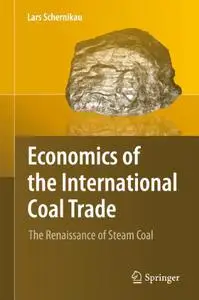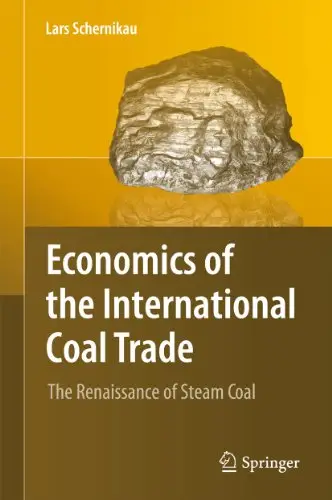Economics of the International Coal Trade: The Renaissance of Steam Coal by Lars Schernikau
English | PDF | 2010 | 257 Pages | ISBN : 9048192390 | 7.2 MB
The world today depends on oil, coal and gas (in that order of importance) for over 80% of its primary energy. From the time humans tamed fire, wood or bio-mass became the primary energy source. Coal took over from biomass during the Industrial Revolution and accounted for over 60% of world primary energy by the early 1900s.
The current age is often referred to as the Oil Age, which seems appropriate now that about 35% of the world’s primary energy still comes from oil. However, coal is experiencing a renaissance. Today about one quarter of the world’s primary energy and more than 40% of the world’s electricity comes from coal. In addition, about two thirds of the world’s steel is produced using coal. The author predicts that coal will become even more important in the decades to come, mainly driven by demand from China and India.
This book focuses on the role of coal for today’s energy and, most importantly, electricity markets. It starts with a review of coal as a resource, profiling the major steam coal exporting nations and the structure of the supply market. The low investment rate in coal compared to other fossil fuels is discussed, and environmental and safety issues with coal production are reviewed.
The book examines how coal is used in the modern world. It compares coal to other energy resources and speculates on a greater role for coal in the medium-term future. It examines the structure of the steam coal market, contract terms, derivative markets, FOB costs, and introduces the WorldCoal market model. The final chapter summarizes conclusions and predictions.
The author predicts more and larger merger attempts in the coal supply arena and further efforts to manage this development through public policy, greater investment by market participants in logistics and upstream assets, and the development of exchange-based coal trading through standardized coal volumes. The author also outlines why he believes coal prices will rise, eventually catching up with gas.
Please Please :( We Are Here For You And Without You And Your Support We Can’t Continue
Thanks For Buying Premium From My Links For Support
Thanks For Buying Premium From My Links For Support
i will be very grateful when you support me and buy Or Renew Your Premium from my Blog links
i appreciate your support Too much as it will help me to post more and more
Without You And Your Support We Can’t Continue
Thanks For Buying Premium From My Links For Support
i appreciate your support Too much as it will help me to post more and more
Without You And Your Support We Can’t Continue
Thanks For Buying Premium From My Links For Support



